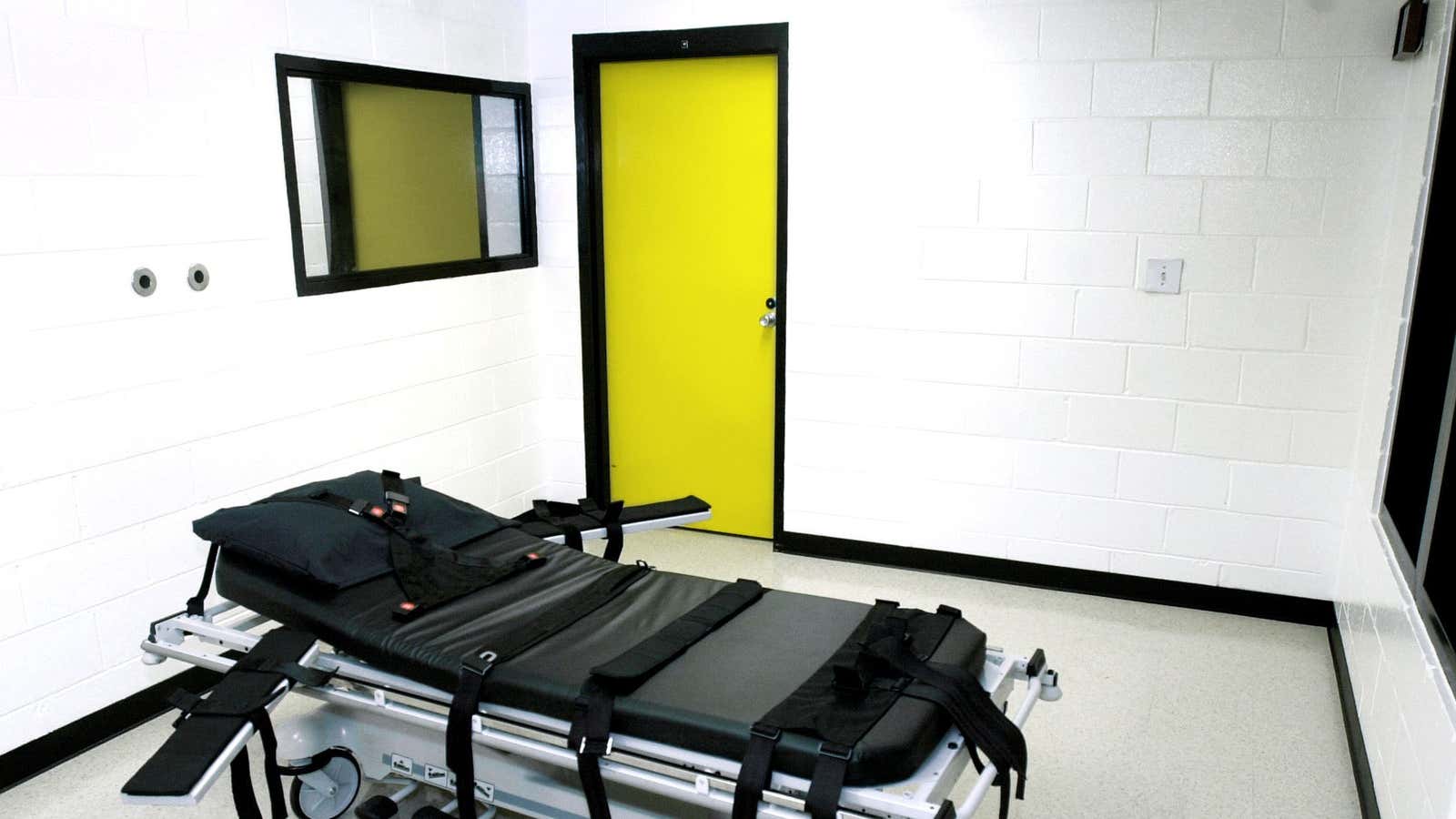If data on death sentences and executions is any indication, capital punishment is on its way out in the United States—although voters in some parts of the country showed in the 2016 election they still back the death penalty.
According to a new report (pdf) from the Death Penalty Information Center (DPIC), death sentences imposed in US courts are at the lowest level since capital punishment was re-instated by the Supreme Court in 1972, with a mere 30 projected for this year. That would make for a 39% drop from last year’s 40-year-low.
Less and less jurisdictions impose the death penalty: while in 2012 death sentences were handed out in 60 counties, this year it was only 27. This means that the geographic distribution of the death penalty is extremely lopsided. “More than 60% of [2016 death] sentences came from a 2% segment of U.S. counties that has historically produced more than half of all death sentences,” the report notes.
Overall, public support for the death penalty is lower than it has been in decades, according to both Gallup and the Pew Research Center. According to the new DPIC report, in several of the counties that impose the most death sentences in the country (in Florida, Texas, and Alabama), voters in the 2016 election chose to replace hawkish prosecutors with candidates who declared they would be less likely to seek capital punishment. At the same time, however, Nebraskans voted to bring back the death penalty, California opted for a proposition that would speed up the execution process instead of repealing capital punishment, and Oklahomans reaffirmed their support for it.
Executions are falling as well: 2016 saw just 20, the lowest total since 1991. The DPIC attributes this trend to several factors: the falling support for the death penalty, along with various efforts to restrict states’ access to lethal injection drugs by pharmaceutical companies and European regulators who banned the drugs’ export to the US.
